The moment my feet hit the tarmac at Jomo Kenyatta International Airport, I knew this wasn’t going to be your typical African safari vacation. The air was different – thin at Nairobi’s altitude, thick with diesel fumes and somehow electric with possibility. My driver, Moses, met me at arrivals holding a sign with my name spelled wrong (Benjamin Brown somehow became “Benjamim Braun“), but his smile was genuine enough to make me trust him immediately.
The ride into the city? Pure orchestrated chaos. Matatus (those colorfully painted shared minibuses) swerved around us blasting music that could wake the dead. Boda bodas – motorcycle taxis – threaded through impossible gaps carrying everything from suited businessmen to entire families. One guy zoomed past with a full-sized couch strapped to his bike. Nobody batted an eye.
Moses laughed at my death grip on the door handle. “This is nothing,” he said. “Wait until rush hour.“
Nairobi: First Impressions That Stick
What Hit Me First:
- The smell: roasting maize, diesel, dust and something floral I never identified.
- The sounds: horns, hawkers, three different languages in every conversation.
- The hustle: everyone moving with absolute purpose.
- The contrasts: glass towers next to corrugated iron shops.
My hotel sat in Westlands, the bougie part of town where ex-pats and wealthy Kenyans pretend they’re not in Africa. But I didn’t fly 8,000 miles to eat at Java House (Kenya’s Starbucks). Within hours, I was wandering the streets, probably looking exactly like the tourist I was, but not caring one bit.
Street Economics 101
| Item | Street Price (KSH) | Hotel Price (KSH) | Reality Check |
| Bottled water | 30 | 200 | Streets win |
| Roasted maize | 50 | “We don’t serve that“ | Streets win |
| Taxi to city center | 300-500 | 1,500 | Negotiate hard |
| Full lunch | 200-400 | 2,000+ | Streets win |
| SIM card | 100 | 500 | Buy outside airport |
Into the Rift Valley: When Geography Gets Personal
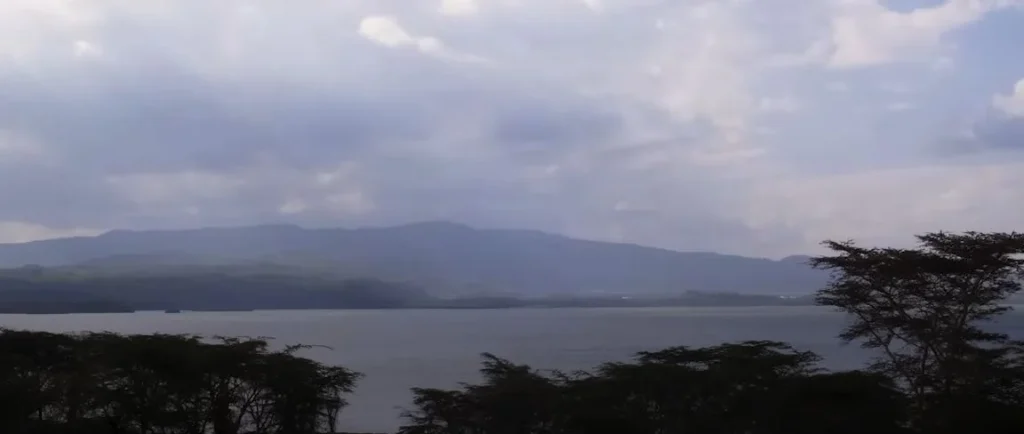
Three days in, I joined a group heading to Lake Nakuru. The drive alone was worth the trip fee. The Rift Valley doesn’t gradually appear – one moment you’re on flat highland, the next, the earth drops away and you’re staring at a view that makes the Grand Canyon look modest.
We stopped at the viewpoint where every tourist stops, but I don’t care about being cliché when the view is this good. Curio sellers swarmed, but one old guy just sat on a rock, not selling anything. “Every day,” he told me when I asked, “I sit here and watch. Forty years now. Still not tired of it.“
The descent into the valley is a driving experience that would give American liability lawyers heart attacks. Trucks with failed brakes have escape ramps every few hundred meters. Our driver, Paul, took curves at speeds that defied physics while telling us about his kids’ school fees. Kenyans have mastered the art of casual conversation during near-death experiences.
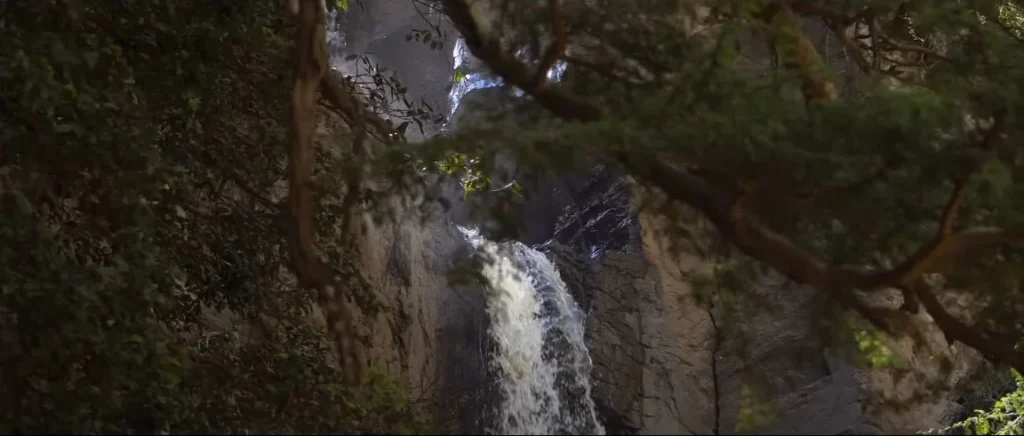
We detoured to see some waterfalls Paul knew about – not on any tourist map, just a spot locals hit on weekends. The path down was treacherous, muddy and absolutely worth it. Water crashed down volcanic rocks while black and white colobus monkeys watched us from the trees like we were the entertainment.
Lake Nakuru: Pink Horizons and Reality Checks
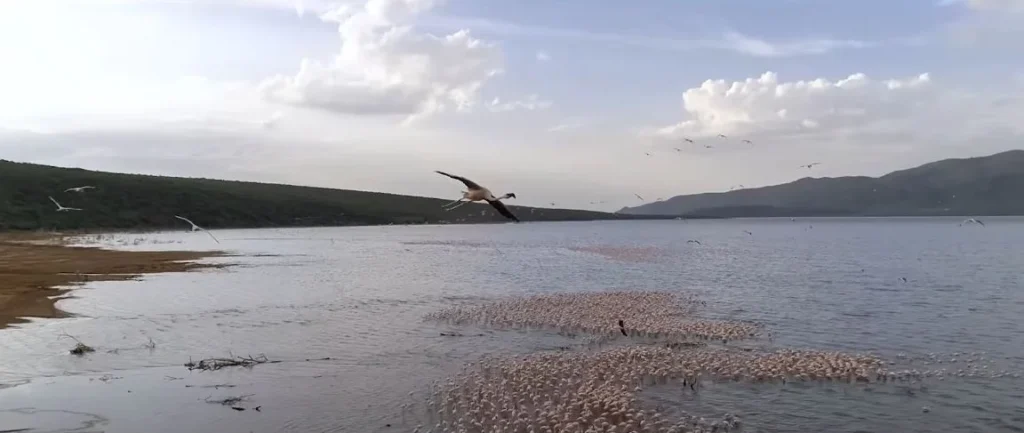
Nothing prepares you for a million flamingos. Photos don’t capture the sound – a constant murmur like the world’s largest cocktail party. The smell is something else (bird crap and alkaline water create a unique perfume), but you forget it when they take flight. The sky turns into a moving pink cloud, wings beating in chaos that somehow has rhythm.
But here’s what the Instagram posts don’t show: Lake Nakuru is dying. Water levels fluctuating wildly, pollution from nearby Nakuru town, climate change doing it’s thing. Some years, the flamingos barely show. We got lucky, but luck shouldn’t be required to see nature’s wonders.
The Park’s Other Residents
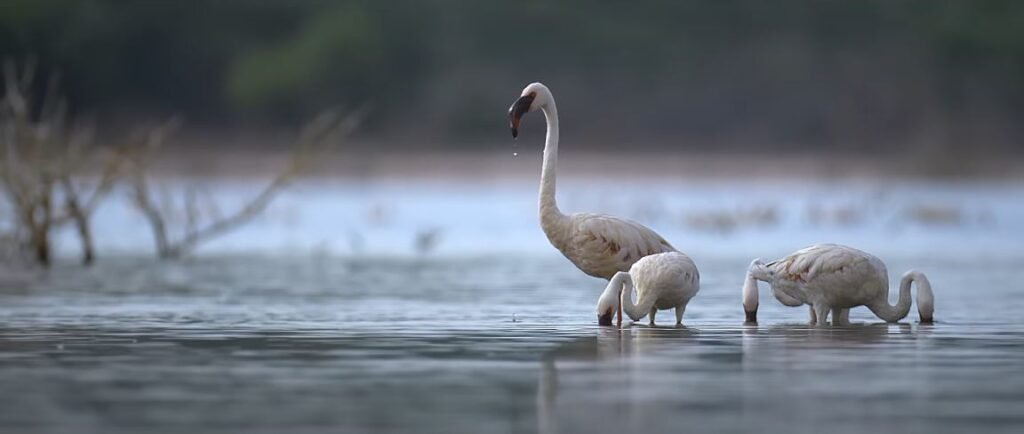
While everyone’s hypnotized by flamingos, the park’s other animals go about their business:
The Unexpected Stars:
- Rothschild giraffes (rarer than you’d think).
- Rhinos that look prehistoric because they basically are.
- Baboons that will absolutely steal your lunch.
- Waterbucks with target-shaped rings on their butts.
- Pythons (didn’t see one, but the ranger assured me they’re there).
A white rhino appeared from bushes maybe thirty meters from our van. You don’t realize how big they are until one’s close enough that you can see individual wrinkles. It looked at us with tiny eyes that seemed to say, “I survived dinosaur extinction, I’ll survive you too.” Then it went back to grazing, completely unbothered by our existence.
The Maasai Mara: Where Life and Death Dance
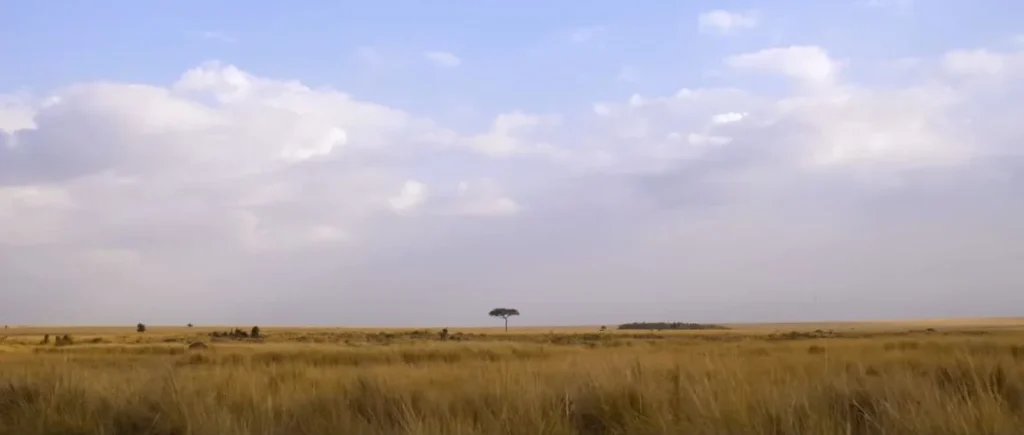
The Mara is six hours from Nairobi if you drive like a reasonable person, four if you drive like a Kenyan. We did it in five, which felt like a compromise with death. The landscape changes gradually – buildings thin out, fences disappear and suddenly you’re in the Africa of documentaries.
My first game drive started at 5:30 AM. I thought that was early until I realized the animals had been up for hours, probably laughing at tourists who think sunrise is early.
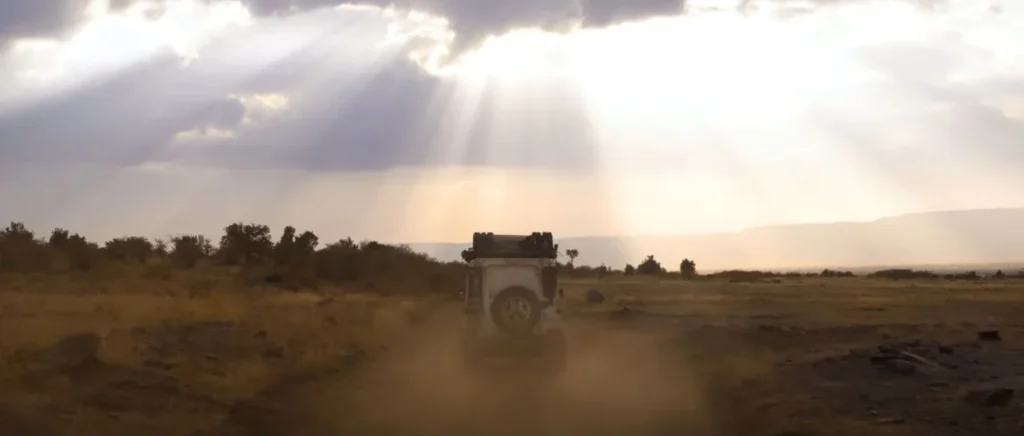
Samuel, my guide, had eyes that could spot a leopard in a tree from two kilometers away. I couldn’t see elephants that were practically next to us until he pointed them out. “Twenty years doing this,” he said. “You learn to see patterns, not animals.“
The Economics of Safari Life
Daily Safari Budget Breakdown:
- Park fees: $80 USD (non-resident adult).
- Vehicle and guide: $150-300 per day (split between group).
- Accommodation: $30 (camping) to $1000+ (luxury tented camps).
- Tips: $10-20 per day for guide, $5-10 for camp staff.
- Drinks: $3-5 per beer (they know you’re trapped).
- “I almost got eaten by a lion” story value: Priceless.
Meeting the Neighbors: Wildlife Up Close and Personal
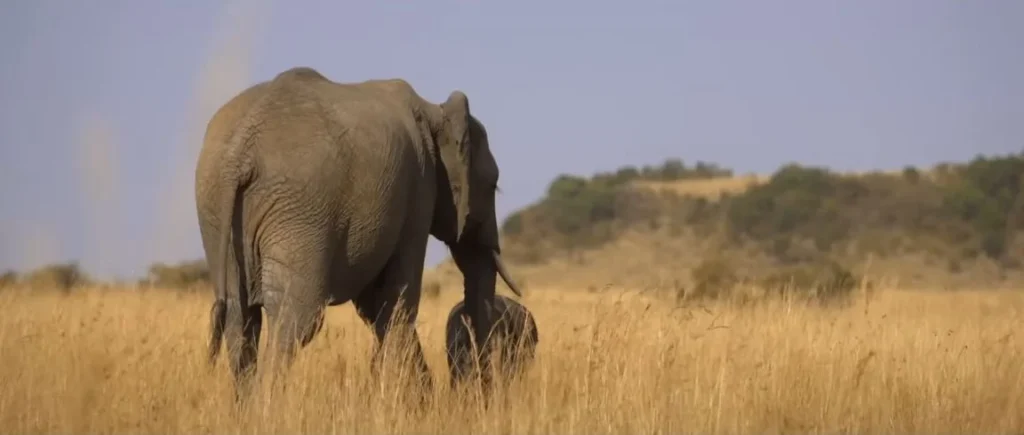
My first elephant encounter happened when I was alone (stupid, I know) walking from my tent to the main lodge. Turned a corner and there she was – massive, magnificent and about ten meters away. We looked at each other. Time stopped. She flapped her ears once (warning? greeting? who knows?), then continued pulling branches from a tree like I wasn’t even there.
That’s when Kenya really gets you – when you realize you’re the visitor in someone else’s home.
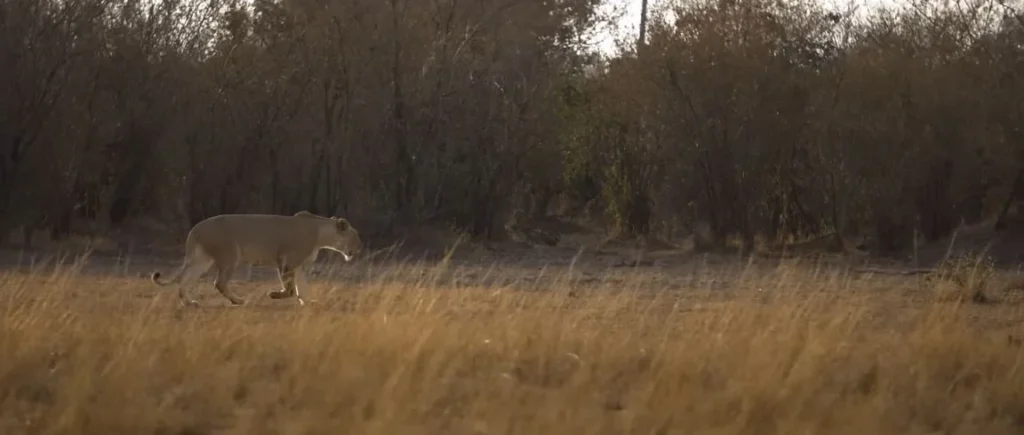
The big cats are different than expected. Lions sleep 20 hours a day, looking like oversized house cats until they don’t. We watched a lioness stalk a warthog for forty minutes. The warthog knew, kept grazing but never relaxed. The lioness eventually gave up, probably deciding the energy expenditure wasn’t worth it. The warthog lived another day. That’s the Mara – constant negotiation between life and death.
The Great Migration: Nature’s Most Democratic Tragedy
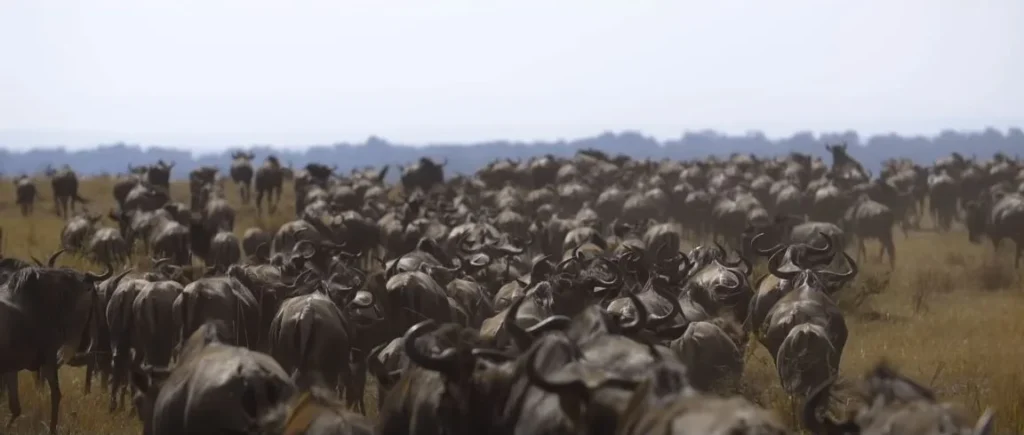
August brought the migration. Two million wildebeest, plus zebras and gazelles, moving in an ancient rhythm. The crossing points at the Mara River turn into something from Dante’s imagination – bodies pushing, crushing, launching into brown water that hides patient crocodiles.
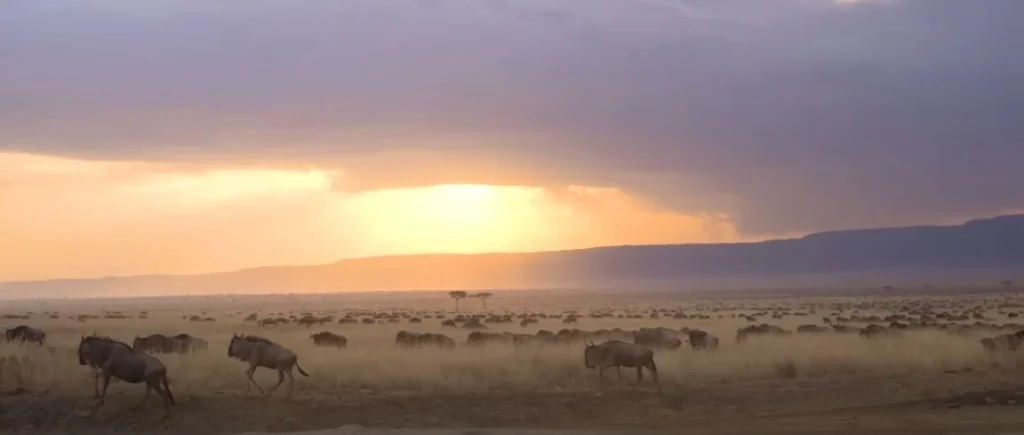
Migration Reality Check:
- Not beautiful – desperate, violent, necessary.
- Crocodiles so fat they can barely move but still deadly.
- Vultures everywhere, nature’s cleanup crew.
- The sound – thundering hooves you feel in your chest.
- The smell – dust, dung, death and somehow, life.
I watched a baby wildebeest get separated during a crossing. Made it across, barely, called for it’s mother who was probably already five kilometers away. In Disney, they’d reunite. In the Mara, hyenas were already circling. That’s the truth of nature – beautiful and brutal in equal measure.
The Coastal Shift: Mombasa and the Swahili Coast
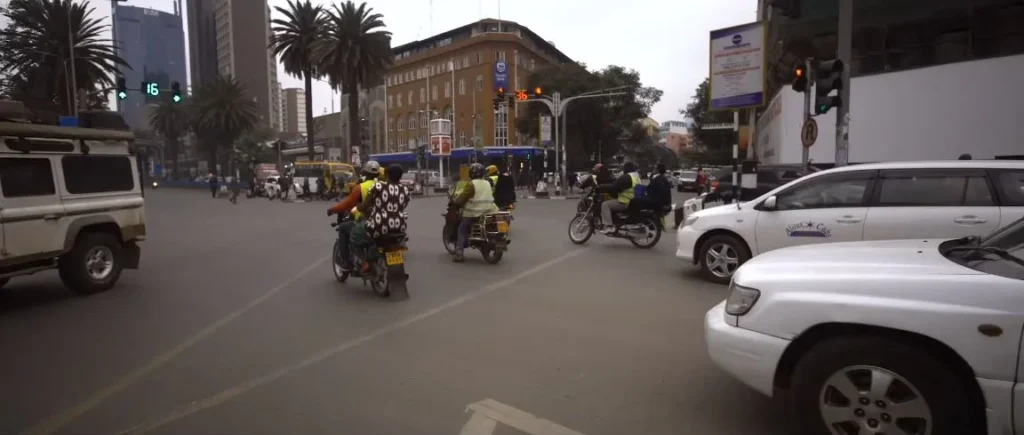
The train to Mombasa is Kenya’s pride – the SGR (Standard Gauge Railway) that replaced the colonial-era “Lunatic Express.” Four and a half hours from Nairobi’s cool highlands to Mombasa’s humid embrace. I splurged on first class ($30 felt like stealing) and watched Kenya transform through increasingly fingerprint-smudged windows.
The temperature rises with every kilometer toward the coast. By Voi, you’re sweating just sitting still. By the time we hit Mombasa, the air is so thick you could swim through it. My body, adjusted to Nairobi’s altitude, felt like it was breathing soup.
But then Old Town hit me with it’s chaos and charm and discomfort became irrelevant.
Old Town: Where History Lives and Breathes
Mombasa’s Old Town doesn’t try to be pretty for tourists. It just exists, unapologetically, as it has for centuries. Portuguese-built Fort Jesus squats over narrow streets where Arab dhows once unloaded spices and slaves. Now those same streets sell everything from smartphones to samosas.
The architecture tells stories if you know how to read them. Swahili houses with their carved wooden doors – each design meaning something different. Balconies added by Indian traders. Portuguese stonework. British colonial additions that look embarrassingly out of place. It’s architectural archaeology you can walk through.
Old Town Survival Guide:
- Get lost on purpose (you will anyway).
- Trust the spice sellers (mostly).
- Tuk-tuks are faster than walking but slower than you’d hope.
- Friday prayers mean some shops close.
- The heat peaks at 2 PM – find shade or die.
- Sunset from the fort walls is mandatory.
The Street Food Gamble That Paid Off
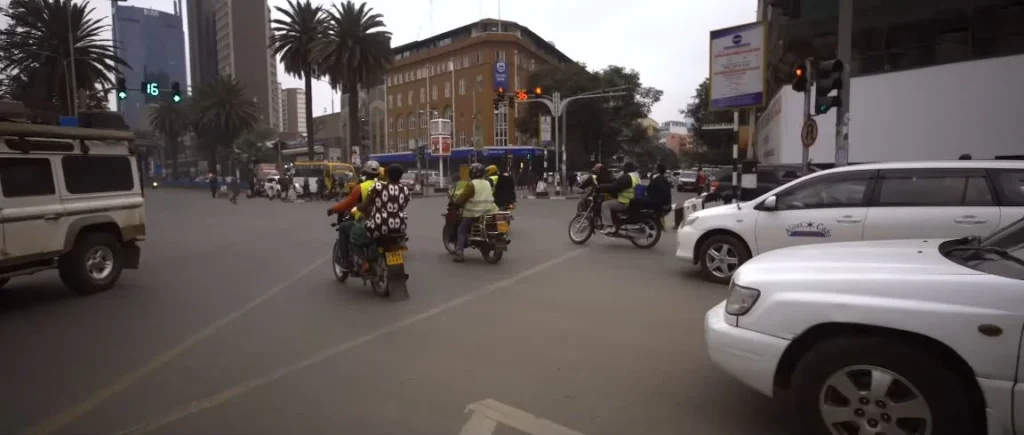
My first mistake was assuming my stomach, hardened by Nairobi street food, was ready for coastal cuisine. My second mistake was accepting every sample offered by the mahamri lady outside my guesthouse.
Coastal street food operates on different principles than highland food. More coconut. More spice. More oil. Way more chili. The mishkaki (meat skewers) guy watched me eat my first one, saw I didn’t immediately die and doubled the pili pili on the second.
The Mombasa Food Hierarchy (According to My Digestive System):
| Dish | Description | Danger Level | Worth It? |
| Viazi karai | Potato balls with meat | Medium | Absolutely |
| Samaki wa kupaka | Fish in coconut curry | Low | Life-changing |
| Mkate wa kumimina | Rice pancakes | Low | Breakfast gold |
| Madafu | Fresh coconut water | None | Daily requirement |
| Biriani | Swahili-style rice dish | Medium | Worth the risk |
| Street juice | Unknown fruits | High | Once was enough |
That first night, I discovered why every Kenya guide mentions bringing Imodium. But lying in my guesthouse, ceiling fan barely moving the humid air, stomach doing it’s best impression of a washing machine, I regretted nothing. Some lessons you learn through textbooks. Others you learn through questionable street prawns at midnight.
Diani Beach: Paradise with a Side of Reality
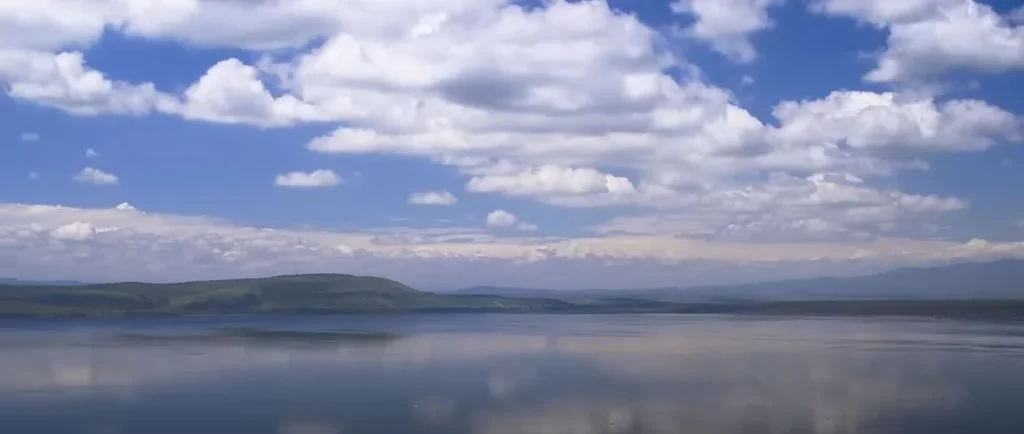
Forty kilometers south of Mombasa, Diani Beach stretches like a postcard someone PhotoShopped to be unrealistic. White sand that squeaks when you walk. Water so blue it looks fake. Palm trees positioned like a resort brochure. It’s almost embarrassing how perfect it looks.
But spend more than a day here and you see the other Diani. Beach boys hustling tourists for boat rides, massages, drugs, whatever you might want. Hotels with walls so high you forget you’re in Africa. The weird apartheid of tourism where staff can serve drinks but can’t swim in the pool.
I stayed in a local guesthouse away from the beach road. Ten dollars a night. No air con. Shared bathroom. Best decision I made. The owner, Fatuma, treated me like family, which meant being scolded for paying too much for mangoes and forced to eat breakfast even when I insisted I wasn’t hungry.
The Indian Ocean Teaches Patience
The tides here are dramatic. Low tide exposes reef for hundreds of meters. Locals appear with buckets, harvesting octopus and shells. High tide brings the kitesurfers, their colorful sails like butterflies on steroids.
I tried kitesurfing. Two hours of swallowing seawater and being dragged across coral taught me that some sports require more than enthusiasm. The instructor, a German who’d “meant to stay two weeks” five years ago, just kept saying “Feel the wind.” I felt the wind. The wind felt violent.
Beach Economics:
- Beach chair rental: 500 KSH (if you’re white).
- Beach chair rental: 200 KSH (if you speak Swahili).
- Beach chair rental: Free (if you buy drinks).
- Fresh fish from fishermen: 300 KSH per kg.
- Same fish at restaurant: 2,000 KSH per plate.
- Sunset dhow cruise: Negotiable based on desperation.
Back to the Wild: Lake System Adventures
After the coast, I headed to Lake Naivasha, part of the Rift Valley lake system that might be Kenya’s most underrated attraction. These aren’t your peaceful Minnesota lakes. These are volcanic, alkaline, temperamental bodies of water that support ecosystems that shouldn’t exist.
Lake Naivasha is freshwater, unusual for the Rift Valley. It’s also full of hippos, which nobody tells you until you’re in a boat and suddenly realize those rocks are moving.
“Don’t trail your hand in the water,” says the boat guy, way too casually. “Crocodiles?” “No, hippos. Crocodiles you might survive.”
We motor past blooms of water hyacinth, an invasive species choking the lake. Fishing eagles watch from dead trees. A hippo surfaces ten meters away, considers us, decides we’re not worth the effort, disappears. My heart takes five minutes to return to normal.
Crescent Island: Walking with Zebras
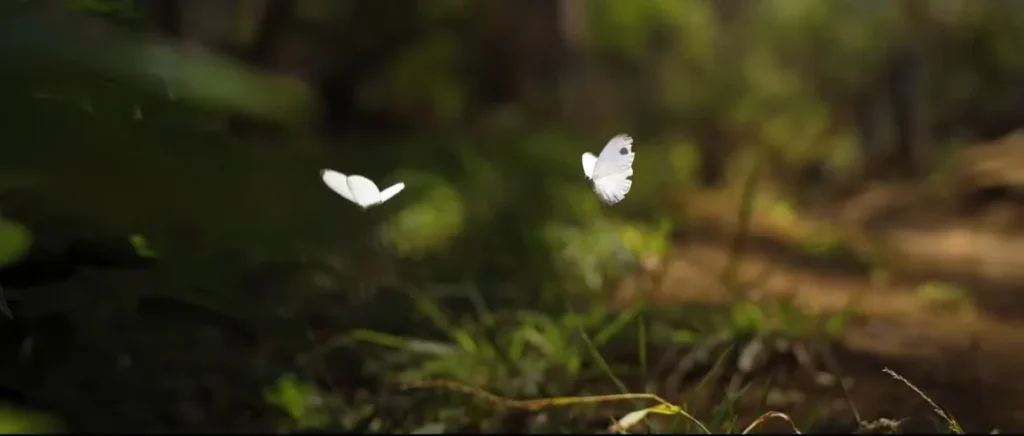
There’s this place on Lake Naivasha called Crescent Island. No predators, so you can walk among the animals. Sounds like a Disney movie. Feels like one too, until a giraffe decides you’re standing where it wants to eat and you realize a “gentle” nudge from a giraffe could relocate your skeleton.
Zebras here don’t run from humans. Neither do the gazelles. Wildebeest watch you with suspicion but don’t bolt. It’s what Africa might have been like before we taught animals to fear us.
A waterbuck follows me for twenty minutes. Just walking behind me like a dog. The guide laughs. “Sometimes they get curious.” We sit by the lake edge, watching flamingos feed in the shallows. The waterbuck stands nearby, apparently appointed itself my bodyguard.
The Village Experience: Real Kenya Beyond Tourism
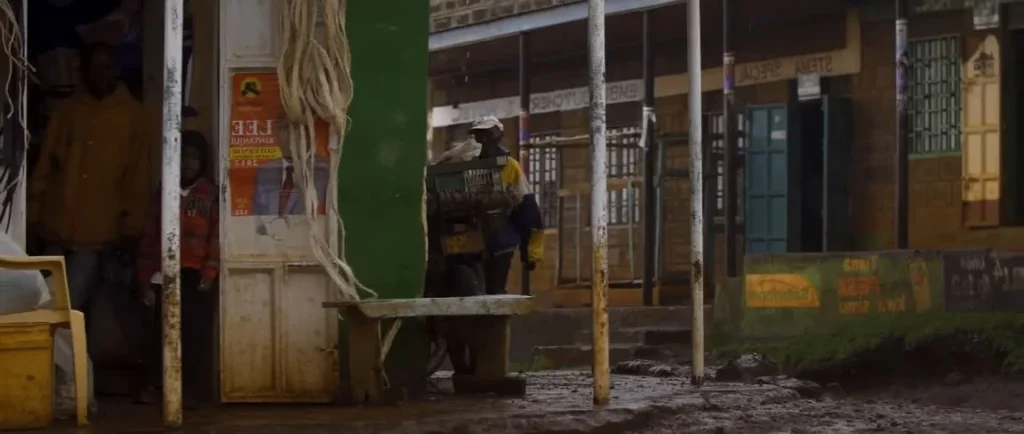
Through a connection of a connection (how everything works in Kenya), I got invited to a wedding in a village outside Nanyuki. Not a tourist wedding. A real, three-day, goat-slaughtering, whole-village-invited Kikuyu wedding.
The first thing you learn: you’re not a guest, you’re family. Which means you work. I found myself peeling potatoes with grandmothers who laughed at my technique, stirring ugali with uncles who kept adding “just a little more” chang’aa (local moonshine) to my cup and somehow becoming part of a traditional dance I had no business attempting.
The bride, Grace, was marrying Peter, who’d returned from working in Dubai. The whole village saw this as their success, not just the couple’s. Money had been pooled for months. Every woman cooked something. Every man contributed something – money, labor, that same chang’aa that was slowly destroying my liver.
Village Economics That Make No Sense Until They Do
How a Village Wedding Works:
- Invitation = obligation (everyone contributes).
- Contribution = investment (you’ll need a wedding someday).
- No one keeps exact track (but everyone remembers).
- The couple might get enough to start a business.
- Or at least enough for a really good honeymoon.
- Either way, the whole village gets three days of party.
The actual ceremony mixed Christian service with traditions that predated Christianity by centuries. The priest seemed fine with it. “God is God,” he told me. “Names change, but faith is faith.“
Children of Kenya: The Future Running Barefoot
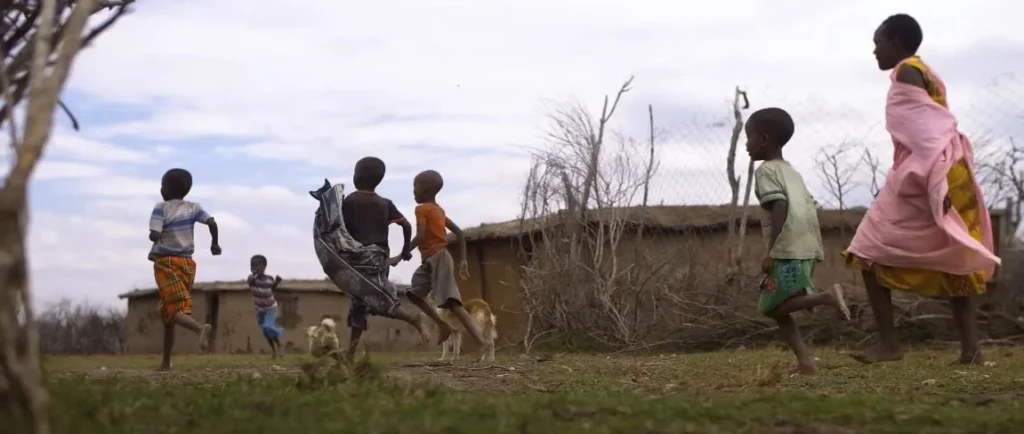
Kids here are different. Not better or worse, just different. They play with sticks and stones and imagination. A tire rim becomes a toy that six kids chase for hours. Plastic bottles become soccer balls. Nothing is manufactured for play, everything is repurposed for joy.
In that village, I watched kids who’d walked five kilometers to school discussing homework in three languages. These eight-year-olds switched between English, Swahili and Kikuyu like it was nothing. Meanwhile, I’m still struggling with “Where’s the bathroom?” in Swahili.
One boy, maybe ten, appointed himself my guide. “You want to see something?” He led me to a massive fig tree, ancient and gnarled. “This tree was here before the British came. My grandfather’s grandfather knew this tree. When everything changes, this tree remains.“
A ten-year-old philosopher in torn shorts and no shoes, teaching me about permanence.
The Education Paradox
Kenya has free primary education. Sounds great until you realize “free” doesn’t include uniforms, books, lunch or the “building fund” that somehow needs funding every term. Parents who make $2 a day scramble to find $50 for school supplies.
But the hunger for education here is different than back home. Kids walk hours to school. They study by candlelight. They share one textbook between five students and somehow all pass their exams. The national obsession with education borders on religious.
The School Visit That Broke Me:
- 60 kids in a classroom built for 30.
- One teacher managing three different grade levels.
- No computers but they’re learning coding on paper.
- Lunch is ugali and beans if you’re lucky.
- Every single kid in uniform, pressed and clean.
- Test scores that would shame American schools.
The teacher, Mr. Kimani, earned less per month than I’d spent on my flight. “But these children,” he said, gesturing to his overcrowded classroom, “they are Kenya’s future. If I don’t teach them, who will?“
Nairobi After Dark: The City’s Other Personality
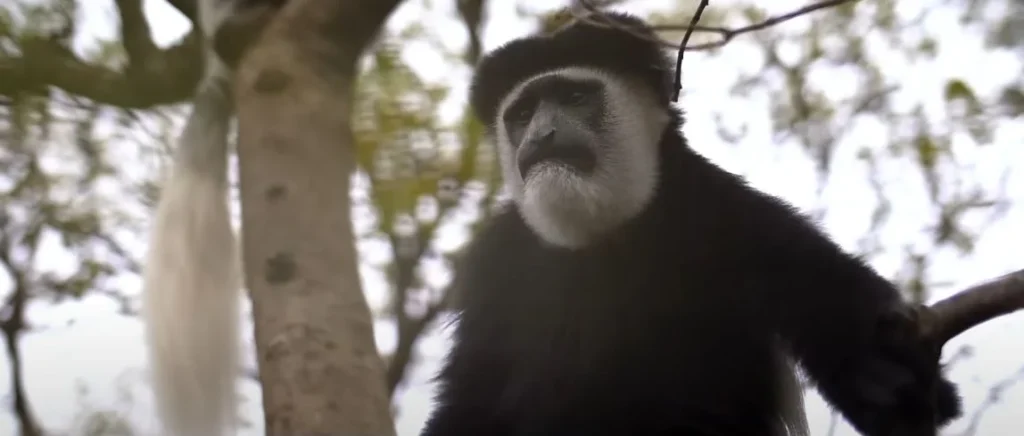
Before diving into Nairobi’s night scene, let me tell you about my wake-up call at the Karura Forest. This green lung in the middle of Nairobi shouldn’t exist – prime real estate that somehow survived the developers. Walking trails where black and white colobus monkeys watch you from above, their magnificent tails hanging like question marks against the canopy.
I’m there at dawn, thinking I’m early, but Nairobi’s runners are already everywhere. These aren’t your casual joggers. These are people who run like machines, barely breathing hard while I’m gasping after a hundred meters. One guy laps me three times, barefoot, probably warming up for his actual run.
But Karura was just the morning appetizer. Nairobi at night is where the city shows it’s true colors.
Gikomba Night Market: Organized Chaos at It’s Finest
Thursday night, 11 PM. My taxi driver thinks I’m insane. “Gikomba? Now? You sure?” But Thomas, a journalist I’d met at Java House, promised this would be worth it. The night market at Gikomba makes daytime shopping look tame.
Mountains of clothes arrive from who-knows-where. Supposedly donations from America and Europe, but I spot tags from stores that definitely don’t donate anything. The whole system runs on some underground economy nobody fully understands but everyone participates in.
Under harsh fluorescent lights powered by generators, hundreds of people sort, sell, bargain. Women with babies strapped to their backs negotiate like their lives depend on it – because they do. A designer jacket that would cost $300 in Manhattan goes for 500 shillings ($4). Shoes that have never been worn, electronics that “fell off trucks,” textbooks for kids whose parents can’t afford bookstores.
Night Market Survival Tips:
- Bring cash in small bills.
- Your phone will disappear if you’re not careful.
- Bargain everything – first price is tourist tax.
- The good stuff goes fast – midnight to 2 AM is prime time.
- Police raids happen – if everyone runs, you run.
- Best deals come as dawn approaches.
Thomas navigates this maze like he was born here. We duck through alleys I’d never find again, past vendors selling everything from used wedding dresses to car parts. A woman grilling meat over charcoal at 2 AM becomes our refueling station. The meat is unidentifiable. The taste is incredible. My stomach has officially given up trying to protect me.
Matatu Culture: Public Transport as Art Form
Kenya’s matatus aren’t just minibuses. They’re moving art galleries, nightclubs and cultural statements all crammed into vehicles that shouldn’t legally hold half their passengers.
Each matatu represents someone’s vision. One is decorated with Tupac murals and plays only 90s hip-hop. Another is shrine to Manchester United with screens showing match highlights. The one I took from Westlands to downtown had a full DJ setup where the front seat should be.
The routes make no sense until suddenly they do. Route 46 goes to Yaya Centre, except on Tuesdays when it doesn’t, unless it’s raining, in which case it might. The conductors hang from open doors, hitting the side to signal stops, collecting fares with a memory that would shame a computer. They know everyone who owes from yesterday, who paid extra last week, whose grandmother is sick.
Matatu Hierarchy:
| Level | Description | Cost | Survival Rate |
| Death trap | Barely running, packed beyond physics | 20 KSH | Questionable |
| Standard | Music too loud, seats for most | 30-50 KSH | Decent |
| Executive | WiFi, screens, accepts M-Pesa | 60-100 KSH | Good |
| Nganya | Full club experience, LED everything | 100+ KSH | You’ll arrive entertained |
My favorite was the “Gospel Express” – decorated with Bible verses but playing music that would make a priest blush. The contradiction was so perfectly Kenyan nobody mentioned it.
The Hippo Incident That Nearly Made Headlines
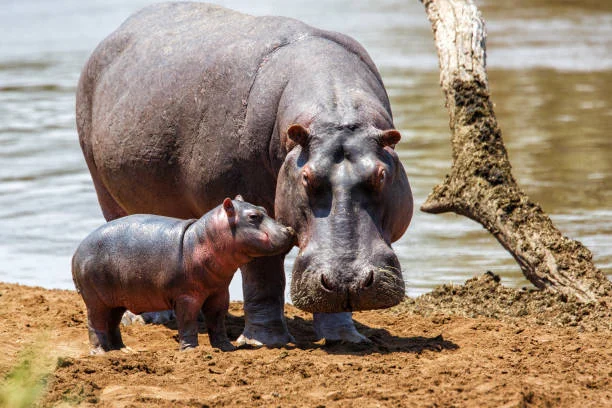
Back to Lake Naivasha for a story I haven’t told anyone properly. I’d gotten cocky after two weeks in country. Thought I understood the rules. Africa was about to teach me otherwise.
Early morning, mist still on the water. I walked down to the lake edge alone (mistake one) to photograph the sunrise (mistake two) without telling anyone where I was going (mistake three). The perfect light made me stupid.
The hippo was already out of the water when I saw it. Twenty meters away. Between me and any escape route. They look slow and fat. They’re not. A hippo can run 30 mph. I can run maybe 10 mph when terrified.
We stared at each other. Time stretched. My camera hung around my neck, forgotten. The hippo snorted, a sound like the world’s angriest horse. I remembered Samuel telling me hippos kill more people than any other animal in Africa.
Then, miracle or luck, a fish eagle screamed overhead. The hippo turned to look. I backed away, slowly, fighting every instinct to run. Step by step, maintaining eye contact, probably whispering prayers to gods I don’t believe in. The hippo watched but didn’t charge.
When I finally reached the lodge, shaking like a leaf, the manager just laughed. “You met Henry. He likes to sun himself there. Usually, we warn guests.“
Usually.
The Money Talk Nobody Has
Let’s be honest about Kenya and money because nobody else will. This place will confuse your sense of economics. A coffee at Art Caffe costs more than most Kenyans make in a day. Safari lodges charge $500 a night while their staff survive on $200 a month. The inequality is staggering, uncomfortable, impossible to ignore.
But then you see how money moves here. The guard at my hotel supports eight family members. The lady selling fruit on the corner is putting three kids through school. Everyone is supporting someone else. The economic web is complex, interconnected in ways Western individualism can’t comprehend.
What Things Really Cost (The Full Picture):
- Average monthly salary: $150-300.
- School fees per term: $50-100.
- Monthly rent (single room): $30-50.
- Daily food budget: $1-2.
- Safari guide monthly salary: $200-400.
- What tourists spend on one meal: $20-50.
Tipping becomes complicated when you realize your loose change is someone’s daily wage. But charity isn’t wanted. Business is. Buy something. Hire someone. Participate in the economy, don’t just observe it.
The Last Days: When Leaving Feels Wrong
My final week, I returned to the Mara because leaving Kenya without one more sunrise over the savanna felt like betrayal. This time I stayed at a basic camp – tent, bucket shower, toilet that was essentially a hole with ambitions.
The last morning delivered everything. Lions on a kill at dawn. A leopard dragging an impala up a tree. Elephants crossing in front of our vehicle so close I could count eyelashes. The Mara was showing off, giving me memories to sustain whatever came next.
But it was the quiet moments that really got me. Sitting by the campfire listening to Julius, the camp cook, tell stories about growing up here when wildlife was everywhere, not just in parks. Watching the Milky Way with no light pollution for hundreds of miles. The sound of lions calling in the distance while you’re trying to sleep in a tent that suddenly feels very, very thin.
The Maasai Farewell
Jackson, my Maasai guide from earlier, invited me for a goodbye ceremony. Nothing tourist-oriented, just his family saying farewell to someone they’d decided was worth remembering.
His grandmother, the one who’d called me soft, grabbed my hands again. This time she nodded approval. “Stronger now,” Jackson translated. “Africa has marked you.“
The kids performed a jumping dance, teaching me the rhythm. I was terrible but enthusiastic. They gave me a bracelet made from beads that told a story I’d never fully understand but would always carry.
Jackson walked me to the road where my taxi waited. “You’ll be back,” he said. Not a question.
What Kenya Really Taught Me
The Lessons Nobody Mentions:
- Time is negotiable – everything happens when it happens.
- Community beats independence every time.
- Joy doesn’t require money (but money helps).
- Nature doesn’t care about your feelings.
- Hospitality is a verb, not a noun.
- Running water is a miracle we’ve forgotten.
- Languages are bridges – learn to build them.
- Corruption and kindness can coexist.
- WiFi is overrated, stories are not.
- Once Africa gets you, you never really leave.
The Aftermath: Re-entry Problems
Back home, everything felt wrong. Too clean. Too organized. Too predictable. People complaining about WiFi speeds while kids in Kenya share single textbooks. Throwing away food that Nairobi street kids would treasure. The waste of it all becomes unbearable once you’ve seen the alternative.
I found myself defending Africa in conversations with people who’d never left Ohio. “It’s not all poverty and wildlife,” I’d say, showing photos of Nairobi’s business district. But then I’d remember Kibera slum. Both truths exist. Kenya taught me to hold contradictions without needing resolution.
The Financial Damage
Final Accounting:
- Flights: $1,200
- Accommodation (5 weeks): $890
- Safari costs: $2,400
- Food and drinks: $650
- Transport: $430
- Bribes (let’s be honest): $85
- Random purchases: $340
- Medical (post-street food): $125
- Tips: $380
- Total: ~$6,500
- Value: Incalculable
Why You Should (and Shouldn’t) Go
Go to Kenya if you want comfort challenged, perspectives shifted, heart broken and remade. Go if you can handle inequality that makes you question everything. Go if you’re ready for beauty that makes you cry and poverty that makes you angry.
Don’t go if you need things clean, organized, predictable. Don’t go if you can’t handle being a walking ATM sign. Don’t go if you think a two-week safari makes you an Africa expert.
But really, just go. Kenya doesn’t need you – it’s been fine for millennia without tourists. But you might need Kenya. You might need to be reminded that most of the world doesn’t live like you do. That joy and suffering coexist. That nature is both brutal and magnificent. That people with nothing will share everything while people with everything share nothing.
The Last Word
Sitting in Nairobi airport, waiting for my flight home, I met an older British couple. Their first time in Africa. They looked shell-shocked, exhausted, transformed. “Was it what you expected?” I asked.
The woman laughed. “Nothing like what we expected. So much better and worse. So much more.“
That’s Kenya. So much more.
As my plane lifted off, I pressed my face to the window, watching the Rift Valley disappear below. Jackson was right. I’d be back. Africa doesn’t let go that easily.
The bracelet his grandmother gave me is still on my wrist. It’s been eight months. Every time I think about taking it off, I remember that morning when a million flamingos took flight, when the world turned pink and possible, when Kenya stopped being a place I was visiting and became a place that owned a piece of me.
Kwaheri, Kenya. See you again soon.

